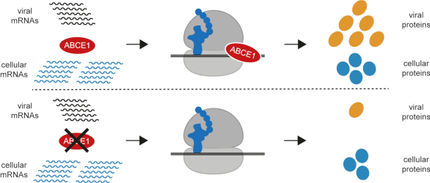VTT speeds up drug development with more advanced microarray technology
RNA interference technology, which is used in cell biology, has revolutionised functional research of the gene products in the last ten years. VTT Technical Research Centre of Finland has developed a method which allows a single microchip to be used to screen the functions of tens of thousands of genes simultaneously by means of RNA interference. Traditional methods only allow a few hundred genes to be screened with each microplate, and therefore the new method will accelerate VTT’s service offering in the field of drug development.
“VTT has already tested the method on a panel of almost one hundred cancer cell types and found it to be both efficient and reliable. We have used the method especially in breast cancer and prostate cancer studies,” explains Juha Rantala, a research scientist at VTT and the founder of the method.
The primary benefit of the method is that it allows such a large number of samples to be analysed simultaneously, which saves both money and human resources, and speeds up research considerably. The findings of the study were published in March 2011 in BMC Genomics, a journal specialising in the methodologies of genetic research.
Miniaturised cell spot microarray techniques, which are used to analyse the functioning of cells, have featured in drug development at VTT for a few years now, and they are both an important research tool and a development priority. Ultra-high throughput screening (UHTS) techniques are used at VTT to study how one gene or groups of genes regulate the cell activities, and how the cell functions promote health, or cause illnesses. RNA interference technology allows genes to be “silenced” and thereby inhibit protein production of genes. Potential future use of RNAi technology includes also the diagnosis and treatment of illnesses.
The unique method developed by VTT is mostly used in genomic-scale analyses which have previously been very expensive. The new technology is believed to give VTT a competitive advantage in genome research which is of special interest of the drug industry. Other potential applications include studying the combined effects of genes and drugs. Research scientists at VTT have also cited the method previously in a scientific publication focusing on the cell division of breast cancer cells. The method is believed to significantly boost VTT’s commercial activities with the drug industry.
Original publication
Original publication
Juha K Rantala, Rami Mäkelä, Anna-Riina Aaltola, Petra Laasola, John-Patrick Mpindi, Matthias Nees, Petri Saviranta, and Olli Kallioniemi. "A cell spot microarray method for production of high density siRNA transfection microarrays."; BMC Genomics 2011, 12:162.
Organizations
Other news from the department science

Get the life science industry in your inbox
By submitting this form you agree that LUMITOS AG will send you the newsletter(s) selected above by email. Your data will not be passed on to third parties. Your data will be stored and processed in accordance with our data protection regulations. LUMITOS may contact you by email for the purpose of advertising or market and opinion surveys. You can revoke your consent at any time without giving reasons to LUMITOS AG, Ernst-Augustin-Str. 2, 12489 Berlin, Germany or by e-mail at revoke@lumitos.com with effect for the future. In addition, each email contains a link to unsubscribe from the corresponding newsletter.




















































